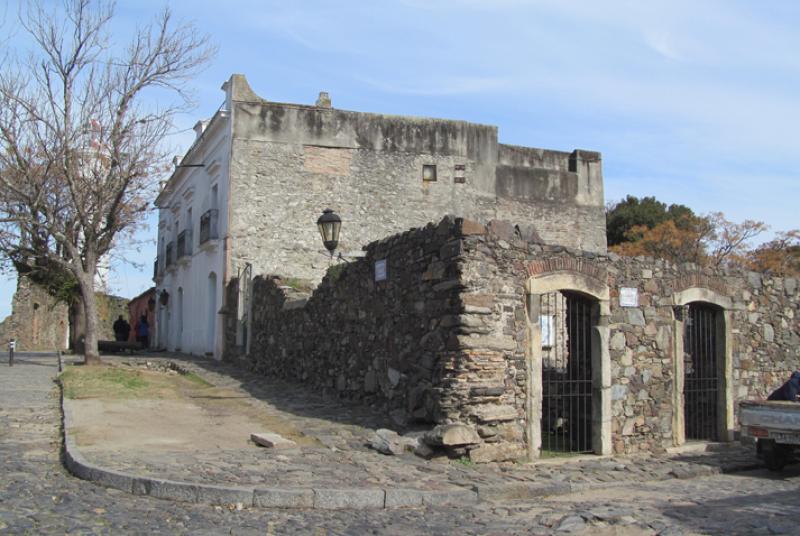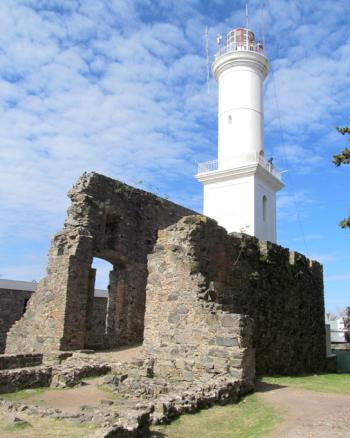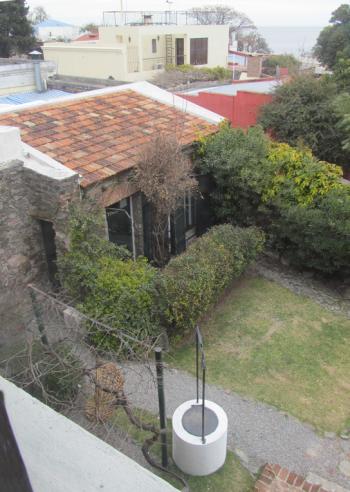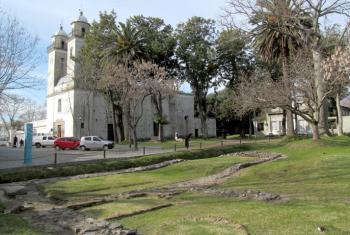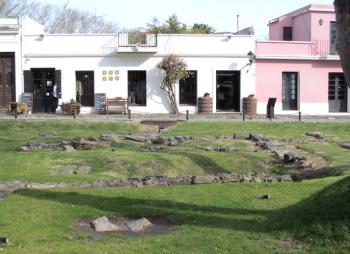A bit of old Portugal in Spanish Uruguay
This item appears on page 28 of the July 2020 issue.
Buenos Aires has always been one of my favorite cities. I try to visit as often as I can to enjoy its elegant cafés, superlative steakhouses, ubiquitous street and flea markets, great museums and parks and, above all, tango, of which I can’t get enough.
But when cosmopolitan living gets a bit much — especially on month-long visits — my husband, Paul, and I like to slip away for a few days to a far simpler place. Our getaway place is not even in Argentina but is just across the Río de la Plata, which separates Argentina from its neighbor Uruguay. We go to the town of Colonia del Sacramento, a decided contrast to its huge neighbor only an hour away across the river.
With a population of under 30,000, not only is Colonia small in comparison with Buenos Aires, but it boasts the Barrio Histórico (Historic District), a UNESCO World Heritage Site. The barrio is a little bit of old Portugal in Spanish-speaking Uruguay. All this makes it a perfect getaway from Buenos Aires… or from Montevideo, Uruguay’s capital about 112 miles south.
A little history
In the 16th and 17th centuries, two empires — the Spanish and the Portuguese — carved out territories for themselves in the New World.
From 1535 on, the Spanish built a fort and settlement on the west bank of the Rio de la Plata, a settlement which was to become Buenos Aires (June ’20, pg. 35).
The Portuguese were a little slow on the uptake, but in 1680, Dom Pedro II of Portugal sent Manuel Lobo to found a colony on the opposite bank of the river as a challenge to Spain’s domination of the Rio de la Plata. Portugal’s new settlement, Colonia del Sacramento, seesawed between the two empires for a century until finally being handed over to the Spanish in 1777.
The buildings left after Colonia finally settled into Spanish hands are what now make up the intimately sized historic district called Barrio Histórico. Walking its cobblestone streets is a return to the earliest days of Portuguese and Spanish colonization.
Square rich in history
The best place to begin a walk through Colonia is at the Portón de Campo, the monumental stone gateway built in 1745 with a wooden drawbridge. Once the main entrance into Colonia, it leads to the oblong Plaza Mayor 25 de Mayo, one of Colonia’s two main squares, lined with simple one- and two-story buildings.
At number 180 is the Museo Portugués, a rambling early-18th-century house constructed of stone, adobe and wood, that now houses Portuguese artifacts, including colonial-era maps.
At the southwest end of the plaza lies the postcard-perfect mid-19th-century lighthouse located in the ruins of the 17th-century Portuguese convent of San Francisco. From the top of the lighthouse, there’s a panoramic view of the historic area, the Rio de la Plata and (maybe) Buenos Aires in the distance, if it’s a clear day.
Steps from the lighthouse, at Plaza Mayor 67, is my favorite house in the historic area, Casa Nacarello, named for a former owner. There are several small rooms to see plus an atmospheric antique kitchen — all furnished with period furniture — transporting visitors back 275 years.
Standing next to Casa Nacarello is the Municipal Museum, with objects donated by descendants of Colonia’s original settlers, many of whom still live in the town. Especially intriguing is the whale skeleton in the museum garden.
House of tiles
Another favorite for me lies along Misiones de los Tapes, five minutes from the Municipal Museum. It’s a tiny, early-18th-century stone house, the Museo del Azulejo, displaying a small but stunning collection of early Spanish, Portuguese and French tiles.
Across the road from the house is the promenade along the Rio de la Plata, a good place for a stroll, especially at sunset.
A 10-minute walk from the Museo del Azulejo leads to the Museo Español at San José 164, a beautiful house adorned with wrought-iron balconies. Originally built in the early 18th century, it has housed both Portuguese and Spanish families over the past three centuries.
It was closed for renovation at the time we visited in August 2019, with no one to tell us when it might reopen. When we visited in years past, the Casa Español displayed Spanish artifacts as well as costumes from different regions of Spain.
Around Plaza de Armas
The final area not to miss is the second of Colonia’s two squares, the Plaza de Armas. Here are found two of Colonia’s oldest structures.
The first is the Iglesia Matriz, Uruguay’s oldest church, built about 1680 just after Manuel Lobo founded Colonia. Its baptismal font is 320 years old. The cemetery that once surrounded the church lies beneath the plaza’s cobblestones.
Next to the church are the ruins of the Governor’s House, located in a park-like enclosure. Nothing remains but the foundations of the house, but it’s a lovely (and historic) spot and you can still make out where the various rooms were located.
There are other historical buildings dotting the Barrio Histórico, including the Museo Indígena and the Museo y Archivo Histórico Regional.
A group ticket giving admission to all the properties is available. It costs just 75 Uruguayan pesos, about $2 at the time of our visit, and is good for two days. We bought our ticket at the Municipal Museum.
Some of Colonia’s museums are closed on Tuesday, others on Wednesday. Also, hours differ, although most seem to be open from 11:15 a.m. to 4:45 p.m. Best to check on opening days and hours at www.museoscolonia.com.uy (in Spanish only), or stop by the Municipal Museum before you begin visiting the various houses and museums.
Visitors should try to spend at least a night or two in Colonia. You’ll have the opportunity to have Colonia almost to yourself, after the day trippers have returned to Buenos Aires or Montevideo, plus the chance to stay in a posada (inn) housed in one of the centuries-old buildings in the Barrio Histórico.
If you go…
Paul and I spent two nights at the Posada Plaza Mayor (Calle del Comercio 111, Colonia del Sacramento, Uruguay; phone 598 4522 3193; posadaplazamayor.com), located in the middle of the Barrio Histórico, in August 2019.
The posada is an atmospheric inn dating from 1750, with rooms encircling a shady courtyard with a fountain. We chose room 18 at the back of the inn because it’s built over a Portuguese ranch dating from 1700. The room, with original stone walls, was authentic and charming but small for the price charged: $250 for the first night, $280 for the second.
Our favorite dining place was Queriendote, a lovely small restaurant just down the block from the Posada Plaza Mayor. We had two afternoon teas there (about $15 for two each time) and a fondue dinner (about $44 for two).
Getting to Colonia del Sacramento, Uruguay, from Buenos Aires, Argentina, is easy. Simply take the fast catamaran (one hour) from the Buquebus (phone 54 11 4316 6530, www.buquebus.com.uy) terminal at Avenida Antártida Argentina 821 in Buenos Aires.
Business-class round-trip catamaran fares were about $147 each. There are less expensive fares in tourist class, including special fares for day trips. There is also a slower ferry (three hours) to Colonia.
Two other companies offer crossings to Colonia: Colonia Express (phone 54 11 5167 7700, www.coloniaexpress.com/ar) and Seacat Colonia (phone 54 11 4314 5100, www.seacatcolonia.com).

